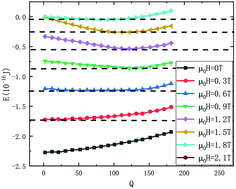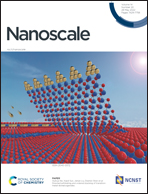A theory of skyrmion crystal formation†
Abstract
A generic theory about skyrmion crystal (SkX) formation in chiral magnetic thin films and its fascinating thermodynamic behaviours is presented. A chiral magnetic film can have many metastable states with an arbitrary skyrmion density up to a maximal value when the parameter κ, which measures the relative Dzyaloshinskii–Moriya interaction (DMI) strength, is large enough. The lowest energy state of an infinite film is a long zig-zag ramified stripe skyrmion occupying the whole film in the absence of a magnetic field. Under an intermediate field perpendicular to the film, the lowest energy state has a finite skyrmion density. This is why a chiral magnetic film is often in a stripy state at a low field and a SkX only around an optimal field when κ is above a critical value. The lowest energy state is still a stripy helical state no matter with or without a field when κ is below the critical value. The multi-metastable states explain the thermodynamic path dependences of the various metastable states of a film. The decrease of the κ value with the temperature explains why SkXs become metastable at low temperatures in many skyrmion systems. These findings open a new avenue for SkX manipulation and skyrmion-based applications.



 Please wait while we load your content...
Please wait while we load your content...